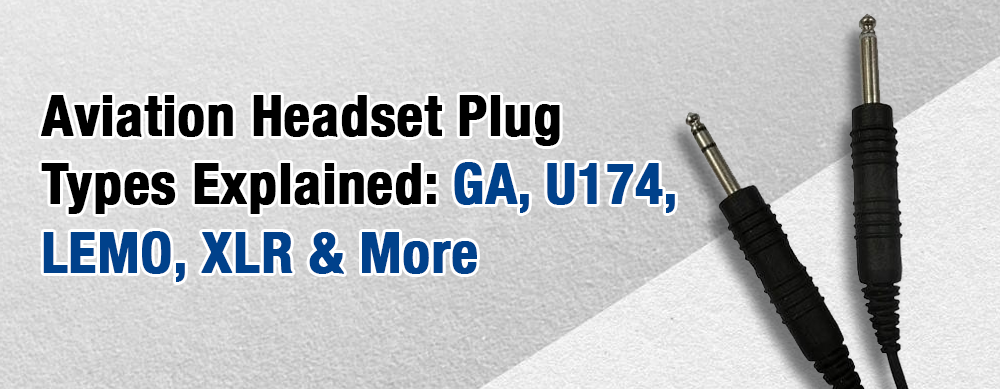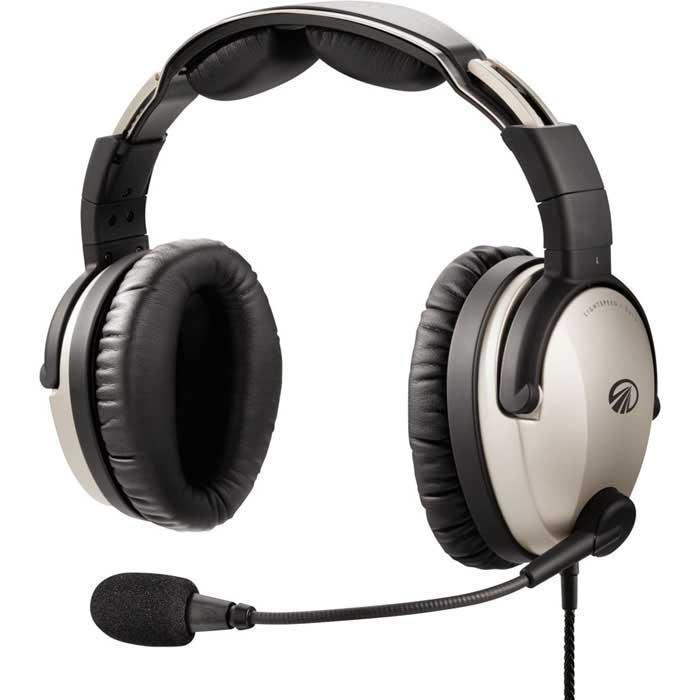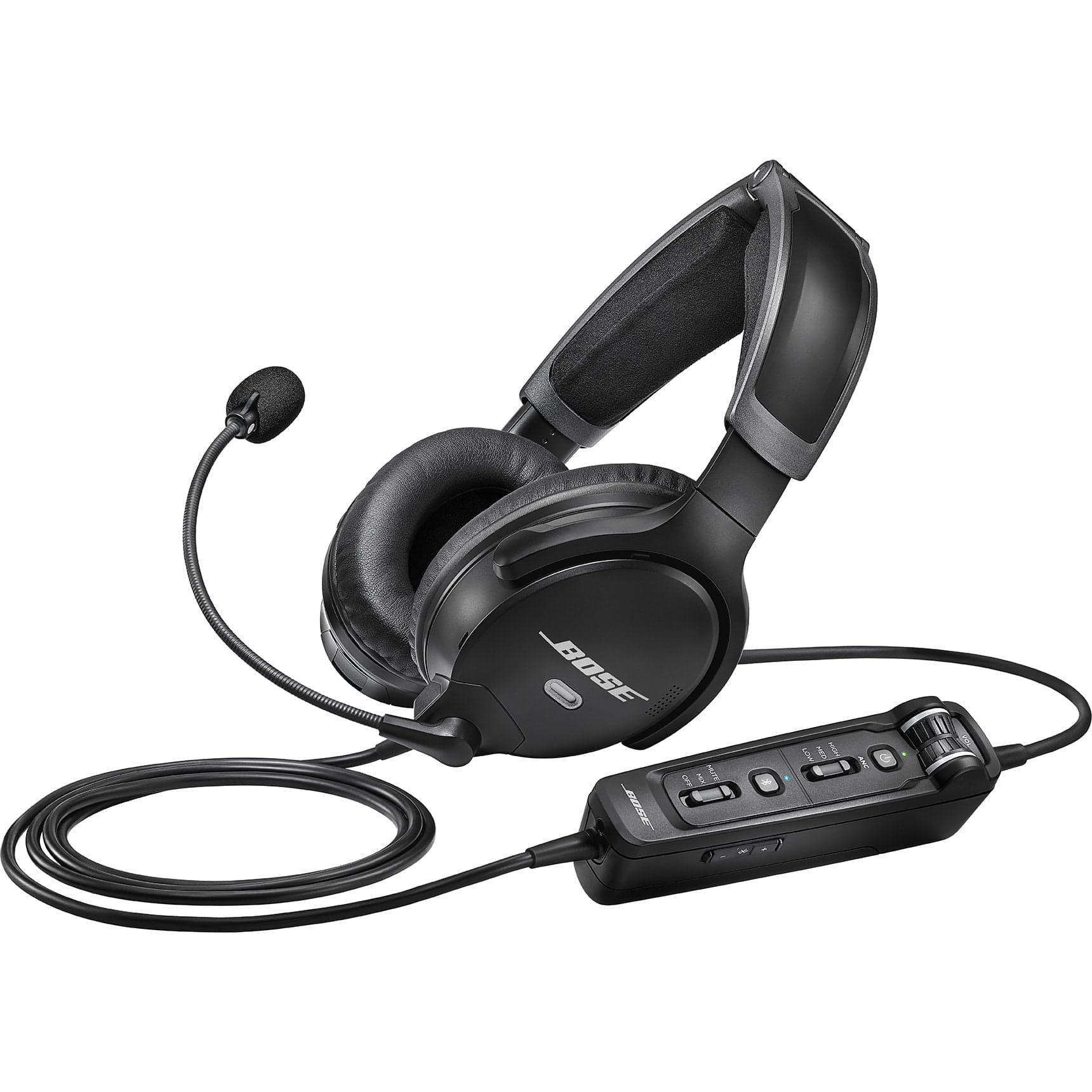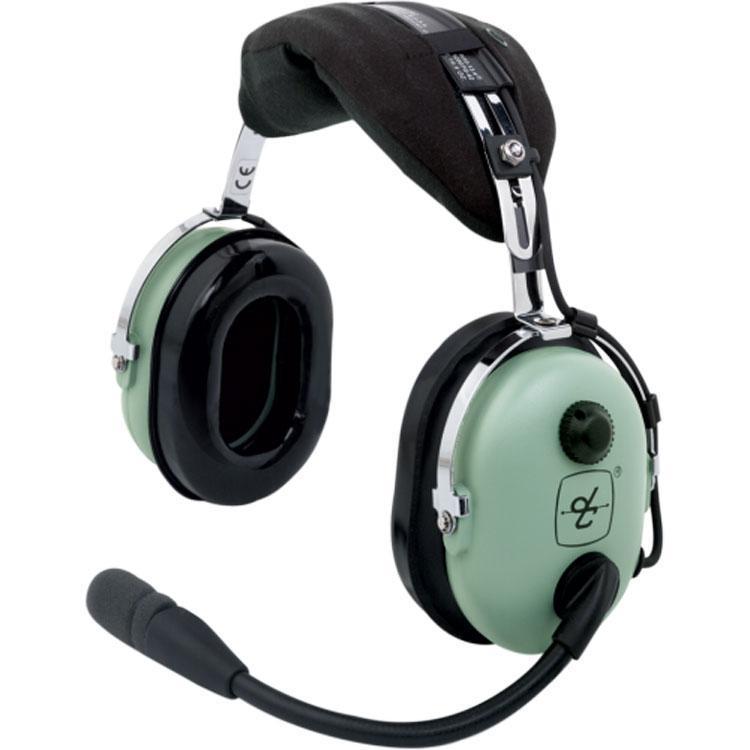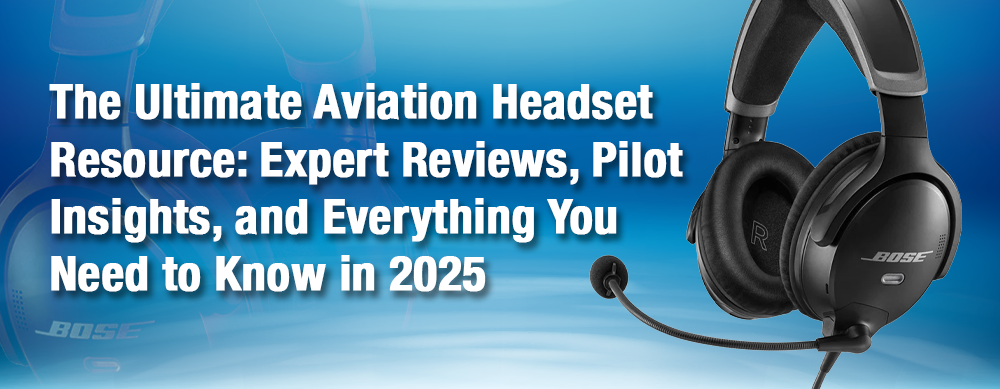Understanding the different types of aviation headset plugs is essential for any pilot or aviation enthusiast. The type of plug your headset uses determines whether it will work with your aircraft’s audio panel or if you’ll need adapters or batteries for features like noise cancellation. In this comprehensive guide, we’ll break down the common headset connectors – GA dual plugs, U174 (helicopter) plugs, LEMO panel power plugs, and Airbus XLR plugs – and answer frequently asked questions about compatibility, adapters, and power requirements. Whether you’re just starting out in aviation or upgrading to a new plane or headset, this guide will help you choose the right connection and make sure your headset keeps you communicating loud and clear.
Quick Comparison of Aviation Headset Plug Types
To start, here’s a quick overview of the major aviation headset plugs, their typical uses, pin configurations, and how they provide power to your headset’s features:
| Plug Type | Also Known As | Typical Aircraft Use | # of Pins/Connectors | ANR/Bluetooth Power |
|---|---|---|---|---|
| GA Dual Plug | Twin plug, PJ-055/PJ-068 | General aviation (Cessna, Piper, Beechcraft, etc.) | 2 (separate mic and audio) | Batteries required for ANR/BT (no power via plugs) |
| U174 Helicopter Plug | U-174/U, NATO plug | Helicopters (Rotorcraft) | 1 (multi-conductor plug) | Batteries required for ANR/BT (no power via plug) |
| LEMO Panel Power 6-Pin | Panel plug, Redel, 6-pin LEMO | Newer GA & upgraded panels (Cirrus, Mooney, etc.) | 6 pins | Aircraft powered – no batteries needed for ANR/BT |
| XLR Airbus 5-Pin | Airbus plug, 5-pin XLR | Commercial airliners (Airbus, some ATR) | 5 pins | Aircraft powered – no batteries needed for ANR/BT |
General Aviation (GA) Dual Plug (Twin Plug)

The GA dual plug is the most common aviation headset connector in civilian flying. It is also known as the Twin Plug or Dual Plug connector. This setup actually uses two separate standard plugs: a quarter-inch (6.35 mm) plug for the headphone audio (often labeled PJ-068) and a smaller 0.206-inch (5.25 mm) plug for the microphone (often labeled PJ-055). You’ll find GA dual plug jacks in almost all general aviation fixed-wing aircraft – for example, Cessna, Piper, Beechcraft, Cirrus, and Mooney airplanes typically use this twin-plug system as the default for headsets.
Despite being nearly universal in GA cockpits, GA plugs do not provide electrical power to the headset. One plug carries the headphone audio and the other carries the mic audio, but none supply power for extras like active noise reduction or Bluetooth. This means if your headset has ANR (Active Noise Reduction) or Bluetooth features, you’ll need to use batteries in the headset’s control module to power those systems. (Most battery-powered ANR headsets take two AA batteries in a control box attached to the cable.) In summary, the GA dual plug is reliable and widely used, but plan to bring spare batteries if you want to use noise-canceling or Bluetooth on a long flight.
Tip: GA dual plugs are sometimes called “PJ plugs” based on their U.S. military part numbers (PJ-068 and PJ-055). So if you see a headset advertised with PJ plugs, it’s referring to the standard GA dual plug connectors.
U174 (Helicopter) Plug

The U-174/U plug (commonly just called “U174”) is the standard single-plug connector used in civilian helicopters and many military aircraft. You might hear it called the “helicopter plug” or “NATO plug,” since it’s used in NATO military headsets as well. This connector is a single chunky plug that carries both the headphone and microphone connections through multiple conductors in one unit. At first glance, the U174 looks similar to one of the GA plugs, but on closer inspection it’s shorter and thicker than a GA plug and has a different pin configuration internally.
Helicopters like the Robinson R22/R44, Bell 206, and others use the U174 jack for the crew headsets. If you compare a U174 to the GA dual plugs, remember that U174 uses one plug instead of two – so it’s convenient for helicopter pilots to plug in quickly with one connection. However, just like GA plugs, the U174 plug does not provide power for ANR or Bluetooth headset features on its own. If you have a noise-canceling helicopter headset (or you use a GA ANR headset with a U174 adapter), you’ll still rely on batteries in the headset’s control box to run those active features.
One important note: The U174 is not directly compatible with GA dual plug jacks – and vice versa – without an adapter. We’ll cover adapters later, but essentially you can convert a GA headset to a helicopter with an adapter cable, so you don’t need to buy a whole new headset when switching between airplane and helicopter, as long as you have the right adapter.
LEMO Panel Power Plug (6-Pin)

The 6-pin panel power plug is a newer style connector that allows your headset to draw power from the aircraft’s electrical system. This plug is commonly called a LEMO plug (for the manufacturer, LEMO, who produces the Redel 6-pin connector) or simply an “aircraft panel power” plug. It’s a round connector with six small pins arranged inside. You’ll typically find 6-pin LEMO jacks in newer high-end general aviation aircraft or as retrofitted options – for example, many Cirrus SR20/22 and Mooney models offer a panel-powered headset jack alongside or in place of the standard GA jacks. If your plane doesn’t have one, you can have a kit installed to add a 6-pin connector to your panel for pilot and co-pilot headsets.
The big advantage of a panel power plug is that it supplies power to your headset for all functions. In other words, with a LEMO 6-pin headset, you do not need batteries for ANR or Bluetooth – the headset is powered by the aircraft’s electrical system. The single 6-pin connection carries audio, mic, and power. This results in a cleaner installation (no battery box dangling from the cable and no batteries to worry about dying mid-flight). For example, Bose offers their A30 headset in a panel-power version: when you plug it into a LEMO jack and turn on the avionics master, the headset automatically powers up using the aircraft’s power.
Panel power plugs may also be referred to as Redel or Bose plugs (since Bose headsets popularized them) or just “6-pin” connectors. If you’re considering upgrading your aircraft to have panel power jacks, there are installation kits available (such as the Bose Panel Power Install Kit) that an avionics shop can install. This upgrade can be great for avid pilots who use ANR headsets frequently – you’ll never have to carry spare batteries again, and you’ll free up some cockpit clutter. Just keep in mind that if you have a panel-power headset, you’ll need an adapter or a different cable to use it in a plane that only has GA dual plugs (more on that in the adapter section below).
XLR (Airbus) 5-Pin Plug

The XLR 5-pin plug is a type of headset connector mainly found in commercial airliners, especially Airbus aircraft. It’s often called the Airbus plug for that reason. Physically, the Airbus XLR plug is another panel-mounted round connector that looks very much like the LEMO plug, except that it has five pins inside instead of six. Airline pilots who fly Airbus, ATR, or some business jets will be familiar with the 5-pin XLR headset jack. This connector provides the audio and microphone connections similar to other plugs, and it can also supply power from the aircraft to certain headsets.
In an Airbus or other aircraft equipped with XLR jacks, a compatible 5-pin headset can be powered by the aircraft so that ANR and other features run without batteries. (For example, some Bose and David Clark headsets offer “Airbus versions” that use aircraft power via the XLR connector.) However, it’s important to note that not all 5-pin installations provide full power for every headset model – some airline headsets still use batteries for ANR if the panel doesn’t supply power. Generally though, the presence of an XLR jack means the aircraft intercom can power electret microphones and often the ANR electronics as well, similar to a panel power LEMO setup.
For general aviation pilots, you won’t encounter the XLR 5-pin plug unless you step into the airline or corporate jet world (or if you fly an Airbus for your day job!). But we mention it here for completeness, and because adapters exist to use XLR headsets in GA aircraft or vice versa. For instance, if you somehow ended up with an Airbus-specific headset, you could get an adapter to twin GA plugs, though in doing so you would lose the panel power capability and need batteries. Likewise, there are adapters to use a GA headset in an Airbus by converting the dual plugs into a single 5-pin XLR. We carry those adapters for pilots making the transition.
Do ANR Headsets Need Batteries or Panel Power?
One common point of confusion is whether your headset needs batteries. The answer depends on the plug type:
- GA dual plug or U174: Yes, if your headset has Active Noise Reduction or Bluetooth and is using a GA or U174 connection, it requires batteries in the headset’s control module. Neither the GA twin plugs nor the single U174 provides electrical power to the headset. Always install fresh batteries (typically 2 x AA) and carry spares for long flights. A low-battery light or tone on your headset will warn you when it’s time to change them.
- LEMO 6-pin or Airbus XLR: No (in most cases). These panel-powered connectors supply power from the aircraft to run your headset’s ANR, Bluetooth, and amplifier features. If you plug a panel-power headset into an appropriate 6-pin or 5-pin jack, you do not need to turn on a battery pack – the headset will draw power directly from the plane. This is extremely convenient, but remember: if you use that same panel-power headset in a plane that lacks the appropriate jack, you’ll need an adapter and likely a battery box or cable swap. For example, Bose panel-power headsets can be used in a GA aircraft with a special adapter that includes a battery pack, converting the 6-pin to dual plugs.
In short, ANR and Bluetooth require a power source. You either get it from batteries in the headset or from the aircraft via a powered plug. Always check the specifications of your headset model. Some passive headsets (without ANR or electronics) don’t need any power at all, but anything with active electronics will need one of the above solutions. If you’re tired of changing batteries, moving to a panel power (LEMO) setup in your plane and headset can be a game-changer.
Adapters: Making Your Headset Work Anywhere
Fear not – just because there are different plug types doesn’t mean you must own multiple headsets for different aircraft. Aviation headset adapters are widely available to bridge the gaps between connector types. Here are some common adapter solutions:
GA to Helicopter Adapter
Lets you use a standard dual-plug GA headset in a helicopter’s single U174 jack. This adapter merges the two GA plugs into the one U174 plug. Use case: You bought a great GA headset for flight school and now need to fly a helicopter – just get a GA-to-U174 adapter cable rather than a new headset.
Helicopter to GA Adapter
The inverse of above – use a U174 helicopter headset in a fixed-wing aircraft that has dual GA jacks. This splits the single plug into two. These are a bit less common since most pilots going from heli to airplane might already have a GA headset, but it’s available.
LEMO Panel Power to GA Adapter
This allows a 6-pin panel-power headset to plug into dual GA sockets. Often these adapters include a battery pack because once you leave the panel power jack, you need an alternate power source for ANR. We sell panel-to-GA adapters for Bose and other headset brands.
GA to LEMO Panel Power Adapter
If you have a GA plug headset but your aircraft has a panel power jack, you can adapt the other way around too. This adapter will take your two GA plugs and convert to a 6-pin plug to fit the panel socket. Note that your GA headset will still use its batteries since the adapter can’t magically feed it power.
GA to XLR (Airbus) Adapter
Allows a dual-plug GA headset to be used in an Airbus or airliner with a 5-pin XLR jack. Useful for commercial pilots who want to use their own GA ANR headset on the flight deck. Similarly, XLR to GA adapters let an airline-style headset be used in a GA plane.
U174 to LEMO (and vice versa)
There are also adapters to go between helicopter plugs and panel power plugs for those niche cases (e.g., using a heli headset in a plane with a LEMO jack, or a panel-power headset in a helicopter).
At PilotMall.com, we carry a full range of these adapters and conversion cables. These solutions are usually simple plug-and-play cables that are small enough to toss in your flight bag. (You can browse all our Headset Adapters to find the right one for your situation.)
Popular Headsets and Their Plug Types
Choosing the right headset also involves picking one with the appropriate plug. PilotMall.com proudly carries a wide range of aviation headsets. Below is a list of popular models and their plug types:
- ASA AirClassics HS-1A Headset: Comes with the standard GA dual plug.
- Bose A30 Aviation Headset: Available in GA dual plug, 6-pin LEMO panel power, or U174 helicopter versions.
- David Clark Headsets: Mostly found with GA dual plug configurations, but U174 helicopter versions are available in certain models.
- Faro Aviation Headsets: Primarily GA dual plug models.
- Lightspeed Headsets: Offered in GA dual plug versions and sometimes panel power (LEMO) versions for select models.
- PilotMall.com Headsets: Our own line of value-focused headsets, all using the GA dual plug standard.
- Pilot USA Headsets: Available in GA dual plug and U174 versions depending on the model.
- Telex Headsets: Offered in both GA dual plug and XLR 5-pin (Airbus) versions.
Frequently Asked Questions (FAQ)
Q: What is the most common aviation headset plug?
A: The GA dual plug (two-plug) connector is by far the most common in civilian aviation. Most general aviation planes like Cessna, Piper, and Cirrus use the twin PJ plugs for pilot headsets.
Q: Can I use my GA twin-plug headset in a helicopter?
A: Not directly – you will need a GA-to-U174 adapter cable to use a dual-plug headset in a helicopter. This adapter combines the two GA plugs into the single U174 plug that helicopter audio panels require.
Q: What’s the benefit of a LEMO 6-pin panel power plug?
A: The LEMO 6-pin plug allows your headset to be powered by the aircraft, so you don’t need batteries for ANR or Bluetooth. This means no mid-flight battery swaps and a lighter, simpler headset cable.
Q: How do I know which plug my aircraft uses?
A: Check your aircraft's audio panel. If you see two side-by-side sockets, that’s GA dual plugs. A single round socket with 6 tiny pin holes is a LEMO plug. A single round socket with 5 pins is likely an Airbus XLR. Helicopters use a single, thicker U174 plug. Your aircraft’s POH will also specify the jack type.
Q: Do I need batteries for my ANR headset, or will the aircraft power it?
A: If your headset is plugged into a GA dual jack or U174, you need batteries for ANR/Bluetooth. If you’re using a 6-pin panel power jack or a 5-pin Airbus jack with a compatible headset, the aircraft provides power and no batteries are needed.
Q: Can I upgrade my airplane to have a panel power (LEMO) headset jack?
A: Yes, absolutely. There are installation kits available to add a 6-pin panel power jack to your aircraft. This is a minor modification that an avionics shop can perform.
Q: Are headset adapters a reliable solution?
A: Yes, quality headset adapters are very reliable. They are essentially straight-through wiring connections and shouldn’t introduce noise or signal loss. All the adapters we sell are tested and proven dependable.
Q: Can I use one headset for all types of aircraft?
A: In many cases, yes. You can get a GA dual plug ANR headset and then use adapters to plug it into other aircraft as needed (e.g., GA-to-U174 for helicopters). Alternatively, some headsets from brands like Bose allow you to swap the entire cable/plug assembly.
Conclusion: Choosing the Right Plug and Headset
In summary, aviation headset plugs come in a few flavors, but with the right knowledge, you can use your favorite headset in just about any aircraft. The key is to match the headset plug to the aircraft’s jack or have an adapter ready. For most general aviation pilots, the GA dual plug is king. Helicopter pilots will stick with U174. If you’re flying newer aircraft, you might enjoy the benefits of panel power 6-pin headsets. And if you move up to the airlines, you’ll encounter the 5-pin XLR.
Fly safe and hear clearly! Don’t let plug types or adapter questions keep you on the ground. Browse our selection of Aviation Headsets and Headset Adapters, or contact our team for expert guidance. We’ll make sure you have the right gear to keep you connected in the skies. Happy flying!

